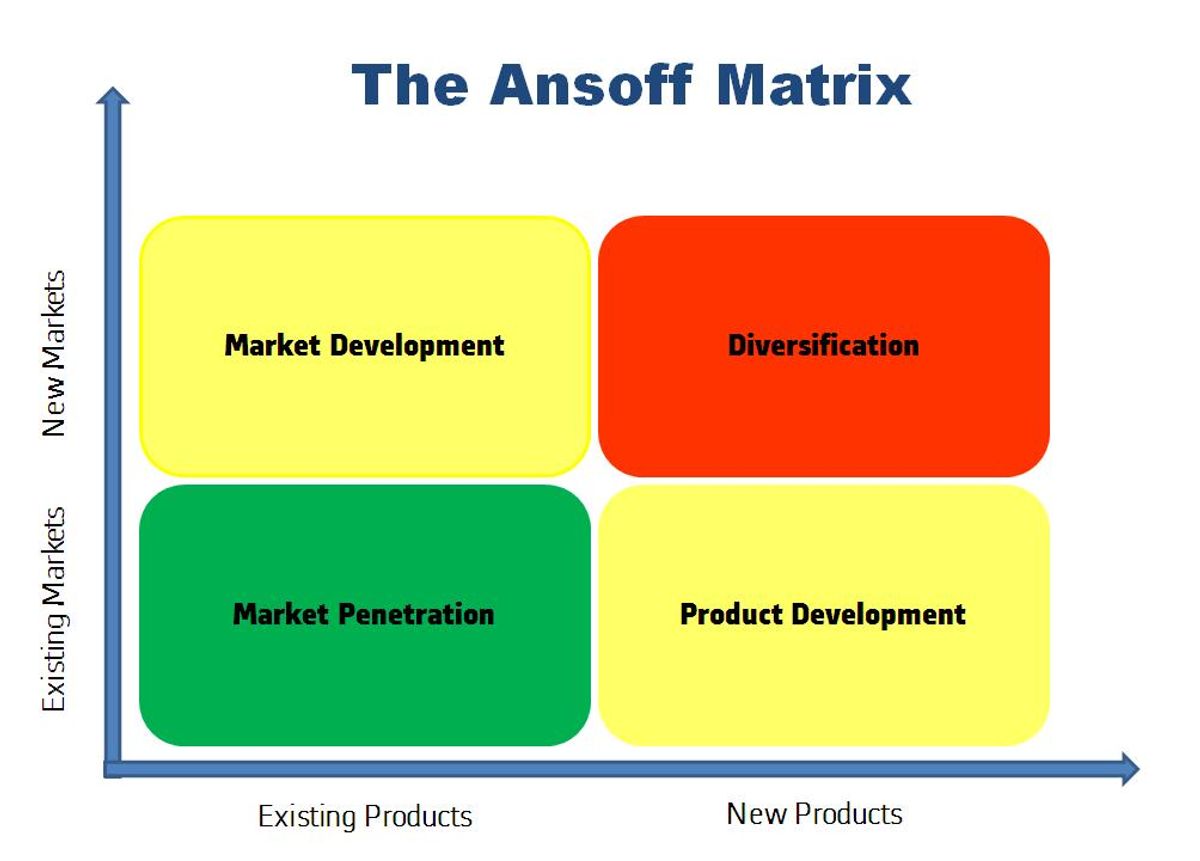
Child development is a complex journey marked by various stages that encompass physical, cognitive, emotional, and social growth. This article delves into the essential phases of this journey, guided by foundational theories and influenced by environmental factors. It highlights how early childhood development is a critical period with pivotal stages and milestones, and how modern developmental psychology addresses the challenges and considerations of nurturing a child’s growth. Furthermore, it explores practical applications of stage theories in educational and supportive settings to foster well-rounded development.
Key Takeaways
- Stage theories by Hall, Freud, and Piaget provide frameworks for understanding the progression of child development, emphasizing behavioral and structural changes in capacities.
- Critical periods such as the neonatal phase, infancy, and toddlerhood are foundational for brain development, with each stage characterized by specific developmental milestones.
- A nurturing environment is crucial for children’s security and development, and recognizing the unique needs of gifted children is essential for their proper intellectual and emotional growth.
- Modern developmental psychology includes considerations for overstimulation and the importance of building confidence and self-esteem at various developmental stages.
- Practical applications of stage theories in education, such as child-focused approaches and monitoring intellectual development, are vital for supporting a child’s developmental journey.
Foundational Theories of Child Development

G. Stanley Hall’s Age-Based Theory
G. Stanley Hall, a pioneer in child psychology, introduced a theory that revolutionized our understanding of child development. Influenced by Darwin’s theories, Hall proposed that children’s development mirrors the evolutionary progression of the species. This perspective suggested that mental growth unfolds in evolutionary stages, each characterized by unique developmental tasks and challenges.
- The neonatal stage, where rapid brain development occurs.
- Infancy, focusing on motor and sensory advancements.
- Toddlerhood, marked by language acquisition and emotional growth.
Hall’s insights laid the groundwork for future developmental theories, emphasizing the importance of viewing children’s growth as a dynamic and evolutionary process. His seminal work, Adolescence (1904), encapsulates his belief in the evolutionary nature of mental growth.
Hall’s approach to child development underscores the significance of each stage in shaping a child’s future. It is a reminder that every phase of development is crucial and warrants our full attention and understanding.
Sigmund Freud’s Psychosexual Stages
Sigmund Freud’s theory of child development is one of the most discussed and controversial. He proposed that personality development occurs through a series of psychosexual stages. Each stage is characterized by the erogenous zone that is the source of the child’s psychosexual energy. The stages are:
- Oral (0-1 years): Pleasure centers on the mouth.
- Anal (1-3 years): Pleasure focuses on bowel and bladder elimination.
- Phallic (3-6 years): Pleasure zone is the genitals.
- Latency (6-puberty): A phase of dormant sexual feelings.
- Genital (puberty onward): Maturation of sexual interests.
Freud believed that experiences during these stages have a profound effect on adult personality and behavior. If a stage is not resolved successfully, it can result in fixations that can influence adult personality traits and behaviors.
The successful navigation of these stages is essential for healthy psychological development and can be influenced by parental care, social interactions, and early experiences.
Understanding Freud’s theory provides insight into the complexities of child development and the importance of early life experiences. It’s crucial for parents and educators to recognize the potential impact of these stages to support a child’s growth effectively.
Jean Piaget’s Cognitive Development Stages
Jean Piaget’s groundbreaking work on cognitive development has been instrumental in understanding how children learn and grow. Children progress through four distinct stages, each characterized by unique cognitive abilities and ways of interpreting the world. These stages are:
- The sensorimotor stage (birth to 2 years), where infants learn through sensory experiences and manipulating objects.
- The preoperational stage (2 to 7 years), marked by the development of language and symbolic thinking but with limited ability to understand others’ perspectives.
- The concrete operational stage (7 to 11 years), during which children begin to think logically about concrete events.
- The formal operational stage (11 years and older), where the capacity for abstract and moral reasoning emerges.
Piaget’s theory emphasizes that each stage builds upon knowledge gained in the previous one, suggesting that cognitive development is a sequential process. > The ability to solve problems and think critically develops gradually as children move from one stage to the next, highlighting the importance of appropriate educational support during each phase.
Early Childhood Development: Pivotal Stages and Milestones

The Neonatal Period and Brain Development
The neonatal period is a time of significant neurological growth and the laying down of the foundation for future cognitive, emotional, and physical development. During the first four weeks of life, an infant’s brain is remarkably receptive to new experiences, which shape the neural pathways that will support lifelong learning and behavior.
- Establishing sleeping and feeding schedules
- Beginning of bonding with caregivers
- Development of basic reflexes and sensory awareness
It is during this critical phase that the milestones of development are keenly observed, as they are indicative of a baby’s progression. While these milestones encompass various domains, they are not just checkboxes for growth; they represent the intricate unfolding of a child’s potential.
The neonatal period sets the stage for a child’s journey through life, making it a pivotal time for ensuring a nurturing environment that supports healthy development.
Infancy: Motor and Sensory Advancements
During infancy, babies experience rapid growth in both motor skills and sensory perception. By 5-6 months, infants begin to understand their own identity and recognize others, which is a crucial aspect of their social development. Movement patterns evolve significantly during this period, with activities such as repeated single leg kicking and bilateral hip and knee flexion and extension becoming common.
- Motor skills development includes grasping, reaching, and rolling over.
- Sensory advancements involve heightened responses to visual and auditory stimuli.
Babies at this stage are also developing ‘object permanence’, a key cognitive milestone where they realize that objects continue to exist even when out of sight.
It’s important to monitor these developments closely, as they can indicate a child’s overall well-being. If an infant isn’t walking on their own or is using one hand significantly more than the other by the age of two, it may be a sign to consult a health professional. Encouraging activities that promote motor and sensory growth, such as interactive play and exposure to different textures and sounds, can support healthy development.
Toddlerhood: Language and Emotional Growth
During the toddler years, typically between 2 and 3 years old, children undergo significant developmental changes. At this stage, toddlers begin to express strong feelings and may experience tantrums as they navigate new emotions like anger, frustration, and excitement. Pretend play becomes a prominent part of their playtime, reflecting their burgeoning imagination and independence.
Language development is particularly notable during this period. Toddlers rapidly expand their vocabulary, often learning new words daily. By the age of 2, many toddlers can combine words into short sentences, making their intentions and needs partly understandable to adults. It’s a time of delightful discovery as they name and point at familiar objects, people, and body parts, and even mimic animal sounds.
To foster this growth, it’s essential to engage with toddlers in meaningful ways:
- Encourage the use of descriptive language by teaching them that a ‘chair’ can be a ‘big chair’, ‘red chair’, or a ‘big red chair’.
- Listen attentively and respond to their attempts at communication, such as replying to ‘Mama milk’ with ‘You want Mum to get you some milk?’. This not only encourages conversation but also builds their communication skills and makes them feel valued.
Emotional development is closely tied to language acquisition. As toddlers learn to link feelings with words, they begin to express emotions verbally, saying they’re ‘sad’ or showing affection through physical gestures. This is a critical step in developing empathy and understanding their own and others’ emotions.
It’s important to be aware of potential developmental concerns. If a toddler has trouble seeing or hearing, doesn’t use single words or gestures, or can’t follow simple instructions, it may be indicative of a developmental delay. Similarly, a lack of interest in eye contact, cuddles, or expressing feelings warrants attention.
The Role of Environment in Child Development

Creating a Nurturing and Secure Atmosphere
Creating a nurturing and secure atmosphere is pivotal for a child’s development. A secure attachment is characterized by a child’s confidence in the availability and responsiveness of their caregiver. This foundation allows children to explore the world, knowing they have a safe base to return to.
To foster such an environment, consider the following steps:
- Establish consistent routines to provide stability.
- Encourage open communication, allowing children to express their feelings.
- Offer practical support and guidance during times of change.
- Build a support network that includes family, educators, and peers.
Ensuring that we create safe and nurturing environments for our children is the best thing we can do to encourage healthy growth and development.
Remember, the goal is not just to provide physical safety but also emotional security. By doing so, we lay the groundwork for our children to develop resilience and the ability to navigate life’s changes with confidence.
The Impact of Early Education and Play
The formative years of childhood are greatly influenced by the experiences in early education. Early education profoundly affects educational achievement, responsible decision-making, and social integration. These benefits, including stress reduction and improved emotional health, are crucial for a child’s development.
Play-based learning is a cornerstone of early childhood education, offering a multitude of advantages over traditional instruction methods. A review article on the effects of play-based learning found that:
- It encourages creativity and imagination.
- It fosters social skills and teamwork.
- It enhances cognitive flexibility and problem-solving abilities.
The integration of play into the curriculum is not merely a form of entertainment; it is a vital component of learning that equips children with the skills necessary for future success.
Creating environments that support play and exploration is essential. These settings allow children to experiment with ideas and learn through their natural curiosity. Recognizing and nurturing the unique talents and learning styles of young children, especially those who are gifted, is a key aspect of fostering a love for learning that lasts a lifetime.
Recognizing and Supporting Gifted Children
Gifted children often exhibit developmental precocity and unique learning styles that set them apart from their peers. It is crucial to recognize and nurture their exceptional abilities while ensuring they are not pushed beyond their emotional comfort zone.
- Ensure they’re in the right academic environment after confirming their giftedness.
- Support them in exploring their interests, which can be diverse and intense.
- Provide opportunities for intellectual stimulation without causing overstimulation.
Gifted children require a balance of challenge and support to thrive. Their intellectual needs must be met with appropriate educational strategies, while their emotional well-being is safeguarded.
Surrounding your child with a support network and connecting with resources like the Davidson Institute can be invaluable. Remember, while gifted children may progress quickly in certain areas, they still need a nurturing environment to develop holistically.
Challenges and Considerations in Modern Developmental Psychology

Understanding Developmental Precocity
Developmental precocity refers to the early onset of developmental milestones, often observed in gifted children. Recognizing the signs of precocity is crucial for providing the appropriate support and educational strategies. While it is a sign of advanced development, it’s important to remember that these children may still face challenges typical of their chronological age.
Gifted children may exhibit advanced intellectual, social, or emotional traits, but they require a nurturing environment to thrive. Here are some key considerations:
- Ensuring that the child’s educational environment is adaptable to their advanced needs without causing undue pressure.
- Balancing the child’s accelerated learning with age-appropriate social and emotional development.
- Avoiding the rush to label a child as precocious without comprehensive assessment by professionals.
It is essential to approach developmental precocity with sensitivity and understanding, recognizing the child’s potential while respecting their individual pace of growth.
Addressing Overstimulation in Children
In our fast-paced world, children are often bombarded with stimuli that can lead to sensory overload. This state of overstimulation can be overwhelming for children, affecting their emotional and cognitive development. It’s crucial to recognize the signs of an overstimulated child, which may include irritability, restlessness, and difficulty focusing.
- Recognize the signs of overstimulation
- Implement calming strategies
- Foster a supportive environment
To combat overstimulation, parents and caregivers can employ strategies to help children remain grounded. Simple techniques such as deep breathing exercises, physical movement, or engaging in quiet activities can make a significant difference. It’s also beneficial to create a calm and structured environment that allows children to retreat and decompress when needed.
By understanding the triggers and signs of overstimulation, we can take proactive steps to mitigate its impact on our children’s well-being.
Each child is unique, and what works for one may not work for another. Patience and flexibility are key in finding the right balance between stimulation and relaxation for your child’s needs.
Building Confidence and Self-Esteem in Developmental Stages
Building confidence and self-esteem in children is a vital aspect of their overall development. Encouraging a child to set goals and work towards them is a key strategy. This could range from completing a simple puzzle to mastering a new skill or achieving academic success. Cultivating a growth mindset is also crucial, where children understand that abilities can be developed through dedication and hard work.
- Encourage goal setting and celebrate achievements
- Foster a growth mindset
- Provide opportunities for self-expression
Building self-esteem involves helping children recognize their own worth and abilities, and guiding them to see challenges as opportunities for growth.
Understanding the developmental stage of a child is essential to tailor support that matches their emotional and cognitive maturity. This approach helps in mitigating behavioral problems and promotes a more harmonious development.
Integrating Stage Theories into Practical Application

Educational Strategies Based on Developmental Stages
Incorporating stage theories of child development into educational strategies allows for a tailored approach that aligns with the child’s current capabilities and potential. Understanding the different stages of development is essential for creating an effective learning environment.
- Recognize the child’s current stage to foster appropriate skills and knowledge.
- Design activities that enhance motor, cognitive, and socio-emotional development.
- Adjust teaching methods to match the child’s evolving needs and abilities.
By focusing on the developmental stage, educators can facilitate a more engaging and productive learning experience.
It is important for educators to not only recognize the stages but also to understand how children process thoughts, pay attention, develop memories, and understand their surroundings. This comprehension aids in crafting educational plans that encourage children to express creativity and create and develop plans, which are crucial for their intellectual and affective development.
Child-Focused Approaches in Religious Education
Incorporating child-focused approaches within religious education involves recognizing the unique ways in which children engage with and understand spiritual concepts. Adapting teaching methods to align with developmental stages is crucial for fostering a meaningful connection with religious teachings.
- The religious element should celebrate rituals and festivals, emphasizing the beauty of the world and the child’s place within it.
- A Bible-orientated stage development approach, informed by cognitive theories like those of Piaget, can enhance the teaching of biblical truths.
- It is important to gauge the readiness of a child for more formal education, often indicated by developmental milestones such as losing milk teeth.
By observing children’s play and interactions, educators can reflect on their spiritual and cognitive processes without imposing rigid labels or ideologies.
Understanding that children’s spirituality encompasses various contexts beyond the classroom is essential. A holistic view of faith formation that goes beyond mere knowledge transfer can lead to a more profound and personal faith experience in children.
Monitoring Intellectual and Affective Development
Monitoring the intellectual and affective development of children is a complex but essential aspect of child rearing and education. Intellectual development can be measured in stages, with each stage reflecting a significant leap in cognitive abilities. For instance, the early stages involve the acquisition of communication skills and the development of cognitive and motor skills.
italics Affective development, on the other hand, encompasses the emotional growth and maturity of a child. It is influenced by various factors, including the family and school environment, which can significantly impact behavioral patterns and aggression levels.
To effectively monitor these developments, it is crucial to understand the nuances of each stage and the expected milestones. This understanding allows parents and educators to provide the right support and interventions at the right time, fostering a well-rounded growth.
- Recognize the signs of intellectual progress, such as increased curiosity and improved problem-solving skills.
- Observe emotional maturity, noting how children manage their feelings and interact with others.
- Adjust educational strategies to align with the child’s developmental stage, ensuring that learning experiences are both challenging and achievable.
Conclusion
In summary, the exploration of child development through stage theories provides a valuable framework for understanding the complex progression of children’s growth. The insights from theorists like Hall, Freud, and Piaget illuminate the multifaceted nature of development, from motor skills to cognitive abilities. While these stages offer a guide, it is crucial to remember that each child is unique, and development can vary widely. The early years, including the neonatal period, infancy, and toddler age, are especially critical for brain development, and thus, creating a nurturing environment is paramount. Recognizing the individual pace of development and the need for a supportive and patient approach to education can help ensure that children reach their full potential without undue pressure. This article underscores the importance of stage theories in developmental psychology while advocating for a child-focused approach that respects the natural unfolding of each child’s abilities and learning styles.
Frequently Asked Questions
What are the foundational theories of child development?
The foundational theories of child development include G. Stanley Hall’s Age-Based Theory, Sigmund Freud’s Psychosexual Stages, and Jean Piaget’s Cognitive Development Stages. These theories propose various frameworks for understanding how children grow and change intellectually, emotionally, and behaviorally through different stages of their lives.
Why are the neonatal period and infancy critical for brain development?
The neonatal period and infancy are critical for brain development because this is when the brain is most plastic and responsive to the environment. During these stages, essential neural pathways and connections are established that will support cognitive, motor, and sensory development.
How does the environment influence child development?
The environment plays a significant role in child development by providing the stimuli and experiences that shape a child’s cognitive, emotional, and social growth. A nurturing and secure atmosphere, early education, and play are key factors that impact a child’s developmental trajectory.
What are some modern challenges in developmental psychology?
Modern challenges in developmental psychology include understanding developmental precocity in gifted children, addressing overstimulation and its effects on children, and building confidence and self-esteem during various developmental stages.
How can stage theories be applied in educational settings?
Stage theories can be applied in educational settings by tailoring teaching methods and curricula to align with the developmental stages of children. This involves recognizing the intellectual and emotional capacities of children at different ages and using appropriate strategies to support their growth.
What is developmental precocity and how should it be addressed?
Developmental precocity refers to children who show advanced intellectual, social, or emotional development at an early age. It is important to recognize and support these gifted children without rushing them through childhood, ensuring they receive education and care that meets their unique needs.






